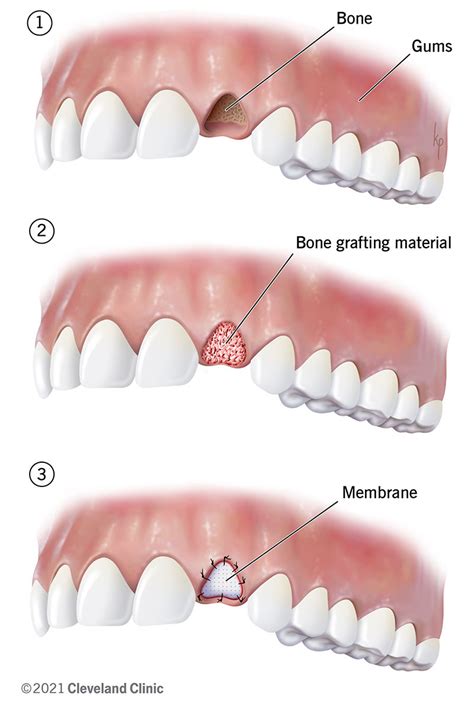How Do They Do Bone Grafts For Dental Implants
Ronan Farrow
Apr 04, 2025 · 3 min read

Table of Contents
How Do They Do Bone Grafts for Dental Implants?
Dental implants offer a fantastic solution for missing teeth, providing a stable and natural-looking replacement. However, sometimes the jawbone isn't dense enough to support the implant. This is where bone grafting comes in. Let's explore this crucial procedure.
Understanding the Need for Bone Grafts
Before a dental implant can be successfully placed, your jawbone needs sufficient density and volume. Bone loss is a common occurrence following tooth extraction, leading to insufficient bone for implant support. If your jawbone is too thin or lacks height, the implant may fail to integrate properly, resulting in loosening or rejection. This is where a bone graft becomes necessary. It essentially adds bone material to the deficient area, providing the foundation needed for a strong and lasting implant.
Types of Bone Grafting Procedures
Several types of bone grafting procedures exist, each tailored to the specific needs of the patient. The dentist will determine the best approach after a thorough examination and assessment:
1. Autograft
This involves harvesting bone from another site within your own body, typically the chin, hip, or tibia. While this method uses your body's own bone, reducing the risk of rejection, it does require an additional surgical site and longer healing time. It's considered the gold standard due to its high success rate.
2. Allograft
This method uses bone from a donor, which has been carefully processed and sterilized. Allografts are readily available and eliminate the need for a second surgical site, resulting in faster recovery times. However, there's a slightly higher risk of rejection, though this is still relatively low.
3. Xenograft
This type of bone graft uses bone from another species, usually cows (bovine bone). It is processed to remove any potential disease agents. Xenografts offer a readily available option, but the body may absorb them more quickly than autografts or allografts.
4. Alloplast
This utilizes synthetic bone substitutes, often made from materials like calcium phosphate. Alloplasts are biocompatible and offer a convenient alternative, but they may not integrate as well as natural bone.
The Bone Grafting Procedure: A Step-by-Step Overview
The actual procedure involves several key steps, which can vary depending on the type of graft used:
- Assessment and Planning: A thorough examination and imaging (e.g., CT scan) are crucial to assess the bone structure and plan the grafting procedure.
- Site Preparation: The area where the graft will be placed is thoroughly cleaned and prepared.
- Graft Placement: The bone graft material is carefully placed into the deficient area.
- Stabilization: The graft is often stabilized using sutures or small screws to ensure it remains in place during healing.
- Wound Closure: The incision is closed, and the area is dressed.
- Post-operative Care: Careful aftercare is essential for proper healing, including medication, a soft food diet, and regular follow-up appointments.
Healing and Recovery
The healing time for a bone graft varies depending on the type of graft and the size of the area being grafted. It can take anywhere from several months to a year before the bone is fully healed and ready to receive dental implants. During this time, the patient may experience some swelling, discomfort, and bruising. Your dentist will provide detailed instructions for proper post-operative care to minimize complications and ensure optimal healing.
Choosing the Right Bone Grafting Method
The selection of the best bone grafting technique depends on a variety of factors including the amount of bone loss, patient's overall health, and the dentist's experience. A consultation with a qualified periodontist or oral surgeon is essential to determine the most appropriate approach for your individual needs. Remember to discuss all aspects of the procedure, including potential risks and benefits, with your dental professional to make an informed decision. Proper planning and execution are paramount for a successful bone graft and subsequent implant placement.
Featured Posts
Also read the following articles
| Article Title | Date |
|---|---|
| How Does A 2 Speed Rear End Work | Apr 04, 2025 |
| How Far Can You Drive Without The Key Fob | Apr 04, 2025 |
| How Do I Know My Humidifier Is Working | Apr 04, 2025 |
| How Do You Beat A Non Compete Agreement In Virginia | Apr 04, 2025 |
| How Fast Do Red Root Floaters Grow | Apr 04, 2025 |
Latest Posts
-
How Long Does Black Powder Last
Apr 05, 2025
-
How Long Does Bipolar Ghosting Last
Apr 05, 2025
-
How Long Does Berkey Filter Last
Apr 05, 2025
-
How Long Does Berber Carpet Last
Apr 05, 2025
-
How Long Does Asphalt Stay Hot In Truck
Apr 05, 2025
Thank you for visiting our website which covers about How Do They Do Bone Grafts For Dental Implants . We hope the information provided has been useful to you. Feel free to contact us if you have any questions or need further assistance. See you next time and don't miss to bookmark.
